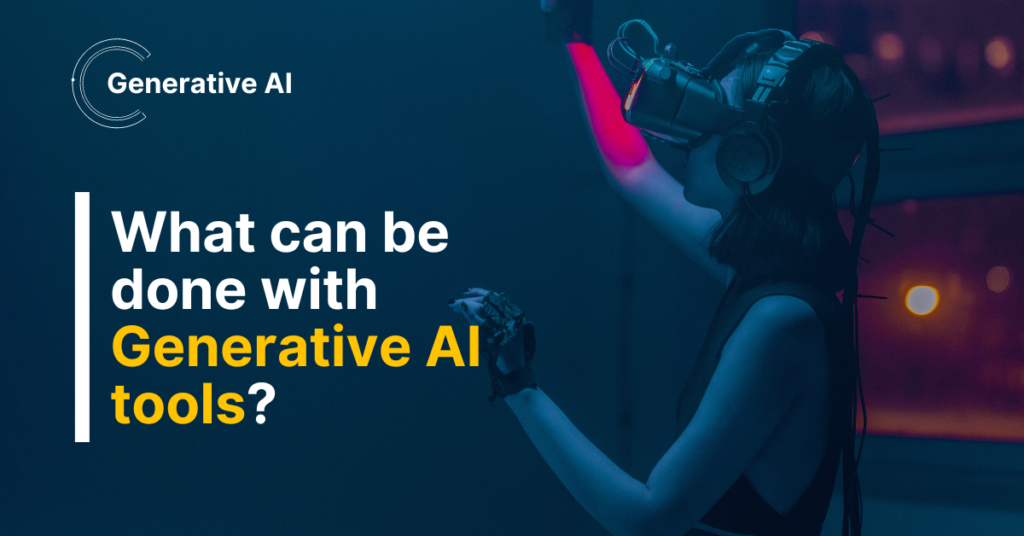What is Generative AI?
Generative AI refers to a class of artificial intelligence systems designed to generate new content, such as text, images, music, or other media. These systems create data that mimics or extends existing datasets. Generative AI is used in various applications, including content creation, design, entertainment, and even in scientific research.
How Does Generative AI Work?
Generative AI typically involves the use of machine learning techniques, particularly deep learning models such as Generative Adversarial Networks (GANs), Variational Autoencoders (VAEs), and transformer models. Here’s a breakdown of some of the most common techniques:
1. Generative Adversarial Networks (GANs)
Components:
GANs consist of two neural networks, a generator and a discriminator, that are trained together.
- Generator: Creates new data instances.
- Discriminator: Evaluates data instances and determines whether they are real (from the training set) or fake (generated by the generator).
Training Process:
- The generator creates data.
- The discriminator evaluates this data alongside real data.
- The generator is penalized for creating data that the discriminator easily detects as fake.
- The discriminator is penalized for incorrectly labeling real data as fake.
- This adversarial process continues until the generator produces data that is indistinguishable from real data to the discriminator.
2. Variational Autoencoders (VAEs)
Components:
VAEs consist of an encoder and a decoder.
- Encoder: Compresses the input data into a latent space (a lower-dimensional representation).
- Decoder: Reconstructs the data from the latent space.
Training Process:
- The model learns to compress data into a latent representation and then reconstruct it, ensuring the output is similar to the original input.
- The latent space is regularized to follow a standard normal distribution, which allows for smooth interpolation and generation of new data samples.
3. Transformer Models
Components:
Transformer models, like GPT (Generative Pre-trained Transformer), use attention mechanisms to process and generate sequences of data.
- Attention Mechanism: Allows the model to weigh the importance of different parts of the input data.
Training Process:
- Models are pre-trained on large datasets to understand patterns in the data.
- Fine-tuning is done for specific tasks by training on more focused datasets.
- These models generate data by predicting the next element in a sequence, given the previous elements.
Applications of Generative AI
1. Content Creation:
- Text: Writing articles, generating code, creating chatbots.
- Images: Producing art, enhancing photos, generating deepfakes.
- Music: Composing original music pieces.
2. Design and Art:
- Creating new designs for fashion, interior decoration, and product prototypes.
- Assisting artists in creating new forms of digital art.
3. Healthcare:
- Drug discovery by generating potential new compounds.
- Creating synthetic medical data to augment training datasets for medical AI.
4. Entertainment:
- Generating scripts for movies or TV shows.
- Creating virtual characters and environments in video games.
Popular Generative AI Tools
Generative AI tools have become increasingly popular across various fields, offering capabilities ranging from text generation to image creation. Here are some of the most well-known and widely used generative AI tools:
1. Text Generation Tools
- GPT-3 (Generative Pre-trained Transformer 3) by OpenAI
- ChatGPT by OpenAI
- BERT (Bidirectional Encoder Representations from Transformers) by Google
2. Image Generation Tools
- DALL-E by OpenAI
- DeepArt
- RunwayML
3. Music Generation Tools
- Amper Music
- AIVA (Artificial Intelligence Virtual Artist)
Generative AI tools are revolutionizing the way we create and interact with content. These tools are being adopted across industries for their ability to generate high-quality text, images, music, and more. As technology advances, we can expect even more innovative applications and tools to emerge, further expanding the possibilities of generative AI.
Challenges and Ethical Considerations
- Quality Control: Ensuring the generated content is accurate, relevant, and of high quality.
- Bias and Fairness: Avoiding the perpetuation of biases present in the training data.
- Ethical Use: Addressing concerns about the use of generated content, such as deepfakes, which can be used maliciously.
- Intellectual Property: Navigating the legal landscape regarding the ownership of AI-generated content.
Generative AI is a rapidly evolving field with vast potential and significant challenges. As technology advances, it will be crucial to address these challenges to harness the benefits of generative AI responsibly.
